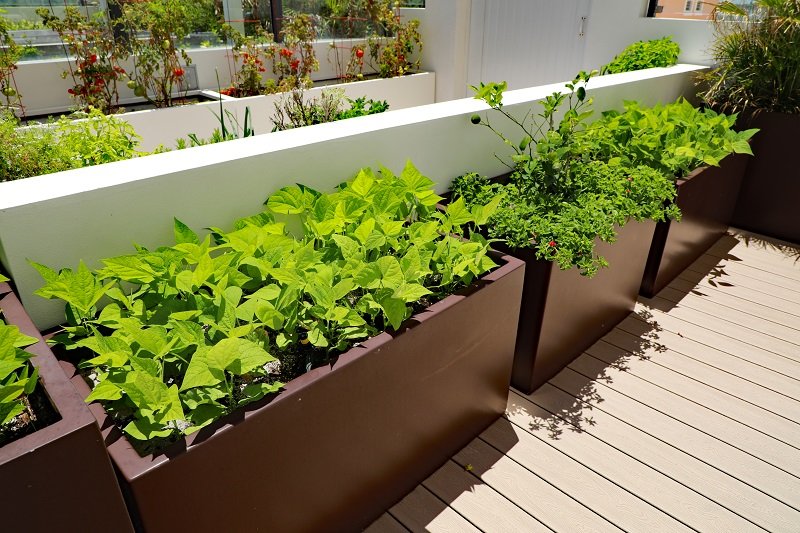Planter boxes are a type of container which are usually placed outdoors, like on the terrace or the balcony. These boxes are meant to display live plants and flowers along with herbs or several other edible plants. The house resident attaches or affixes the box near a place that is easily accessible to them to work and maintain the plants daily.
The container or box can be easily installed under a window and then supported in place with the help of proper brackets on the wall below. In such a situation, it can be even called a window box. For example, a flower box can be used to line decks, steps ,ratios ,porches, and sidewalks. Some of these boxes can be hung from railings too.
The materials used for making these boxes include wood like teak, which is the most durable kind of wood and can withstand harsh weather conditions. Other materials include bricks, metal, fiberglass and also cellular polyvinyl chloride or PVC. Most of the planter boxes last for around three to five years before showing proper signs of rot.
But a properly maintained and painted box can last for around ten to fifteen years. Proper maintenance here refers to disinfecting the planters, for example, which would help in reducing the risk of diseases among the plants , treating the planter wood to keep it from deteriorating over time.
The most suitable material besides teak that can be used for making a planter box is the fibreglass. This is because fibreglass has the advantage of being lightweight and insect-proof over other materials. PVC is also considered a good option because it is rot proof.
Drainage Of The Planter Box
Drainage is a very essential and crucial component of plant health. Without a proper drainage system, the plant may start losing on important nutrients needed to continue its bodily functions. Eventually, with a lack of nutrients, the plant would start to rot. Most planter boxes come with a hole at the bottom or on the sides. This allows the water present in the soil to drain freely to bring adequate air for the roots.
Although different plants have different drainage needs, very few plants can tolerate growing on stagnate water. So it is essential to ensure that there are proper holes in the planter boxes to maintain an appropriate drainage system. The healthier roots would mean healthier plants. The following points can help with drainage in planter boxes:
- Plastic bottles can be used at the base of planter boxes to create a larger room for the plants to breathe.
- To create drainage facilities and keep the planter box weighed down, it is advisable to use landscape rocks.
- Another piece of advice that experts often provide to use Styrofoam packing peanuts at the base of the box or container. This would help in providing drainage and prevent waterlogging in the box.
How To Understand If There Is Proper Drainage?
Planter boxes need to have drainage holes at their bottom or the sides. This is because the stagnated water would choke out any oxygen that has been channeled through the roots. To test that if the planter box has a good drainage system, a simple test can be performed. Fill up the boxes or containers with water and then check how long it takes for the water to drain.
If there is rapid draining of water, it would mean there is no problem with the drainage. But if there is a slow drain of excess water, it is advised to drill some extra holes at the bottom of the box.
Final Words
In conclusion, we can say that whatever be the type of soil or plant, what matters most is the drainage capacity of the planter box. This is because proper drainage would ensure the good health of the plant.




